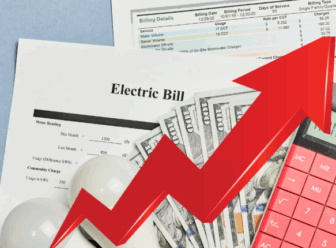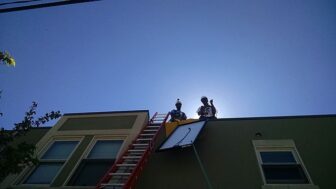King Coal’s year of rejection by banks, judges, and a whole lotta other folks
The Earth Policy Institute just released this revelatory chronology of really sad, horrible, and depressing events in the life of the coal industry since February 2007. What’s next — will Santa be switching to lumps of dirt?
Additional commentary can be found at http://www.earthpolicy.org/Updates/2008/Update70_timeline.htm
26 February 2007 – James Hansen, director of NASA’s Goddard Institute for Space Studies and a leading climate scientist, calls for a moratorium on the construction of coal-fired power plants that do not sequester carbon, saying that it makes no sense to build these plants when we will have to “bulldoze” them in a few years.
26 February 2007 – Under mounting pressure from environmental groups, TXU Corporation, a Dallas-based energy company, abandons plans for 8 of 11 proposed coal-fired power plants, catalyzing the shift from coal-based to renewable energy development in Texas.
2 April 2007 – The U.S. Supreme Court rules that the U.S. Environmental Protection Agency (EPA) has the authority to regulate carbon dioxide and that EPA’s current rationale for not regulating this gas is inadequate.
3 May 2007 – Washington Governor Christine Gregoire signs a bill that prevents new power plants from exceeding 1,100 pounds of carbon dioxide emissions per megawatt hour of electricity generated, creating a de facto moratorium on building new coal-fired power plants in the state.
30 May 2007 – Progress Energy, an energy company serving approximately 3.1 million customers in the Southeast, announces a two-year moratorium on the construction of new coal-fired power plants.
2 July 2007 – The Florida Public Service Commission denies Florida Power & Light the permits needed to move forward with the massive 1,960-megawatt coal-fired Glades Power Park, citing uncertainty surrounding future carbon costs.
13 July 2007 – Florida Governor Charlie Crist signs an Executive Order establishing “maximum allowable emission levels of greenhouse gases for electric utilities.” Under the emissions cap, building new coal-fired power plants in the state seems unlikely.
18 July 2007 – Citigroup downgrades the stocks of Peabody Energy Corp., Arch Coal Inc., and Foundation Coal Holdings Inc., prominent U.S. coal companies. The decision reflects the growing uncertainty surrounding coal’s future in the United States.
18 August 2007 – After opposing new coal-fired power in Nevada, U.S. Senate Majority Leader Harry Reid says that he is opposed to building coal-fired power plants anywhere.
18 October 2007 – The Kansas Department of Health and Environment denies Sunflower Electric Power Corporation air quality permits for two proposed 700-megawatt coal-fired generators on the basis that carbon dioxide is an air pollutant and should be regulated.
3 January 2008 – Merrill Lynch downgrades the investment ratings of Consol Energy Inc. and Peabody Energy Corp., two leading U.S. coal companies.
22 January 2008 – The Attorneys General of California, six eastern states, and the District of Columbia submit a letter to the South Carolina Department of Health and Environmental Control opposing the proposed 1,320-megawatt Pee Dee coal-fired power plant. They note that emissions from this plant would “seriously undermin[e] the concerted efforts being undertaken by multiple states to address global warming.”
30 January 2008 – Citing escalating costs, the Bush administration pulls the plug on federal funding for FutureGen, a joint project with 13 utilities and coal companies to build a demonstration coal-fired power plant that captures and sequesters carbon.
4 February 2008 – Investment banks Morgan Stanley, Citi, and J.P. Morgan Chase announce that any future lending for coal-fired power plants will be contingent on the utilities demonstrating economic viability under future carbon costs. Demonstrating economic viability would require speculation of future costs, imposing a risk on the investment.
8 February 2008 – The U.S. Court of Appeals overturns two EPA mercury rules covering coal-fired power plants, thus requiring new coal-fired plants to implement the most stringent mercury controls available. Compliance is expected to raise the considerable costs of 32 proposed coal plants, some already under construction.
12 February 2008 – Bank of America announces that it will start factoring in a cost of $20-40 per ton of carbon emissions in its risk analysis when evaluating loan applications from utilities.19 February 2008 – The federal government suspends a low-interest loan program for rural utilities seeking assistance for new coal-fired power plants.
11 March 2008 – Representatives Henry Waxman (D-CA) and Edward Markey (D-MA) introduce a bill that would block the EPA and states from issuing permits to new coal-fired power plants that lack state-of-the-art carbon capture and storage technology. Since this technology is at least a decade away from commercial viability, if this bill passes it would essentially place a near-term moratorium on new coal-fired power plants.
18 May 2008 (projected) – Dominion Virginia Power, due to overwhelming public resistance and the opposition of Governor Kaine, is denied its permits to build a new 585 megawatt coal plant in Wise County.




